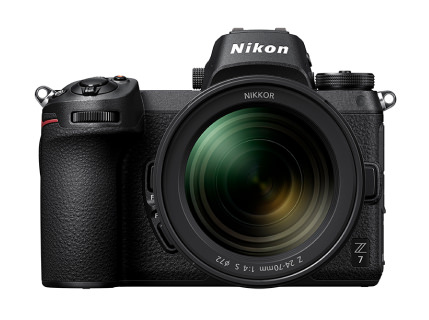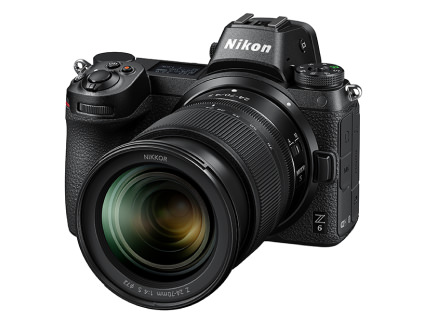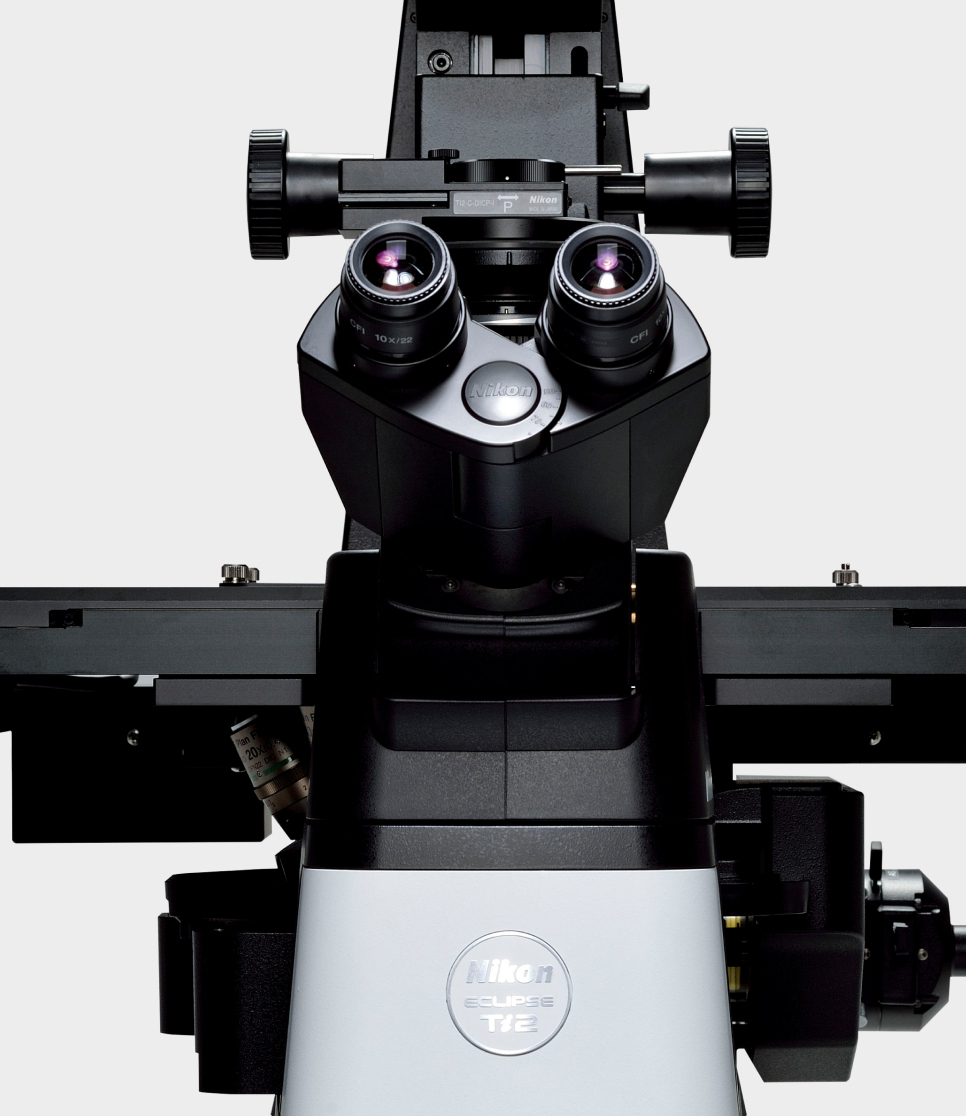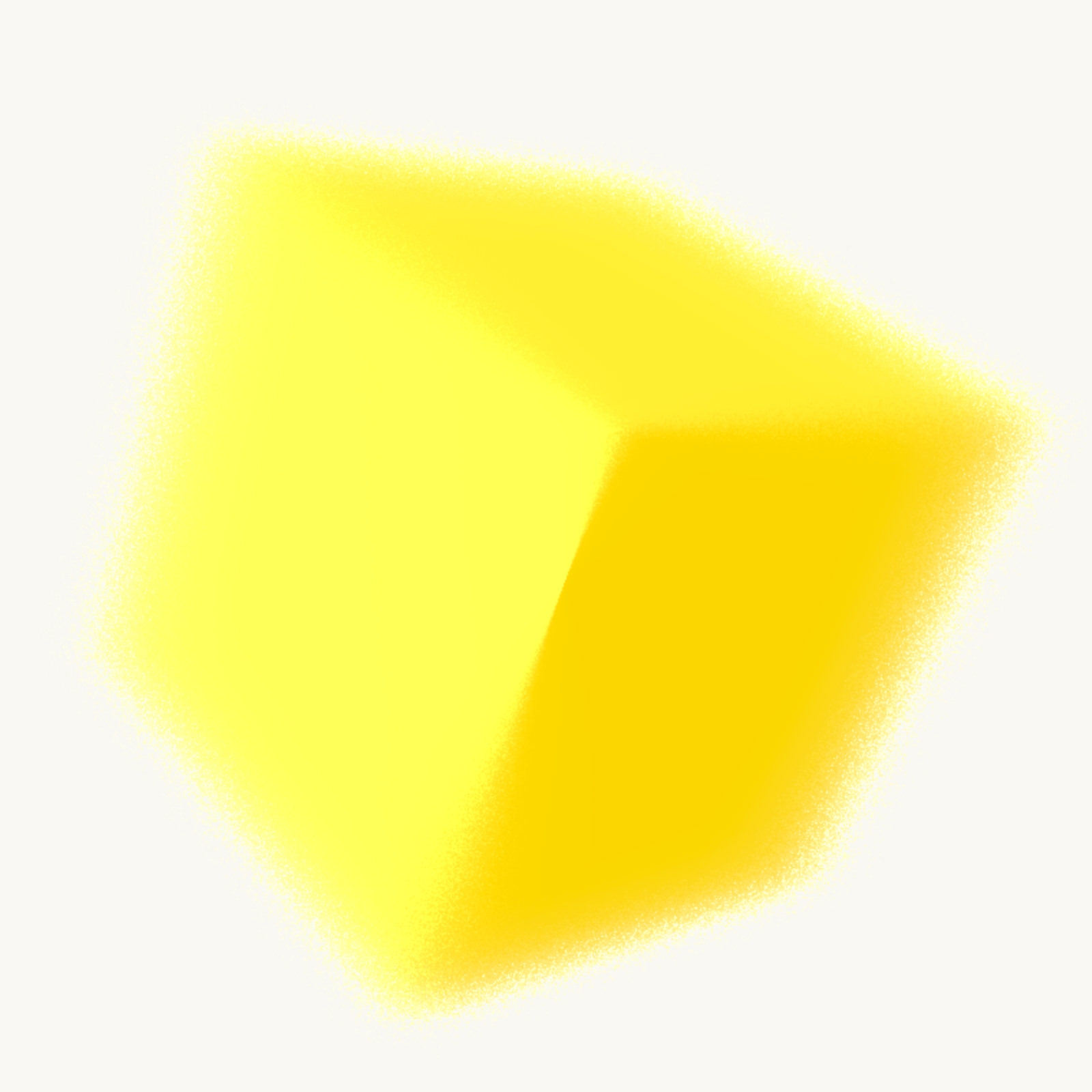
New Nikon Style Interweaving Innovation and Tradition: Z 7/Z 6
- Product

コンポーネント番号: 12
コンポーネント番号: 9
-
Shuhei Yoshikawa
GUI design

-
Makoto Imamizu
Product design

コンポーネント番号: 5

コンポーネント番号: 12
コンポーネント番号: 2
The Z mount is the key to the design
コンポーネント番号: 3
Nikon cameras inherit a proven legacy that has been built continuously through the F and D series.
This is the root of the Nikon spirit that we consider so important, and it's a quality that our
customers also value. The design team's mission was to get the most out of this legacy while
creating something new.
After deliberating within our department, we narrowed things down to
three design directions: one emphasizing authentic mechanical appearance, symbolized by the Nikon F
and F3; another focusing on dynamic design that fits the photographer's body, inherited from the D
series; and a new direction unique to mirrorless cameras, centered around the Z mount that defines
this new stage in the history of Nikon. Following discussion by all members of the design team, we
decided to base the design around the Z mount, and give the appearance a Nikon feel.
コンポーネント番号: 5

コンポーネント番号: 2
A camera that literally feels like a Nikon
コンポーネント番号: 3
Since the cameras were first announced, we have had a lot of customers comment on how they feel like
a Nikon when they pick them up.
That's a result of the concept of ergonomic design built up
over many years, comfortable operational touch and attention to detail.
Designers have actively
participated in this project from the initial stage of development, and a brand new framework has
been created for the Z series.
Everybody has different sized hands. While maintaining the
compact, lightweight body of a mirrorless camera, the Z series realizes an easy-to-hold grip even
for photographers with large hands. This is because the top of the grip is designed higher than the
rest of the body, allowing room for even the little finger.
A distinguishing trait of the Z 7/Z
6, which has been designed from the very base of the framework, is the electronic viewfinder (EVF)
unit that protrudes from the rear of the camera. After long and careful evaluation, we produced an
EVF that allows the photographer to concentrate on shooting without their nose touching the rear
monitor while composing their shot.
Another Nikon-like element we focused on was texture. For
the leather texture finish employed on the grip, which affects how the camera feels to hold, we
considered multiple combinations of density and depth to create a pattern that perfectly fits the
hand.
コンポーネント番号: 3
We also paid special attention to the coloring of the buttons. While values and symbols are usually just printed on buttons, with the Z 7/Z 6, their shapes were engraved on the buttons first and then ink was poured in. This enhances the texture and also prevents markings from being worn off by sweat or friction. Although it requires an extra step in the production process, we employed this method on all the buttons because we thought it was worth it.
コンポーネント番号: 5
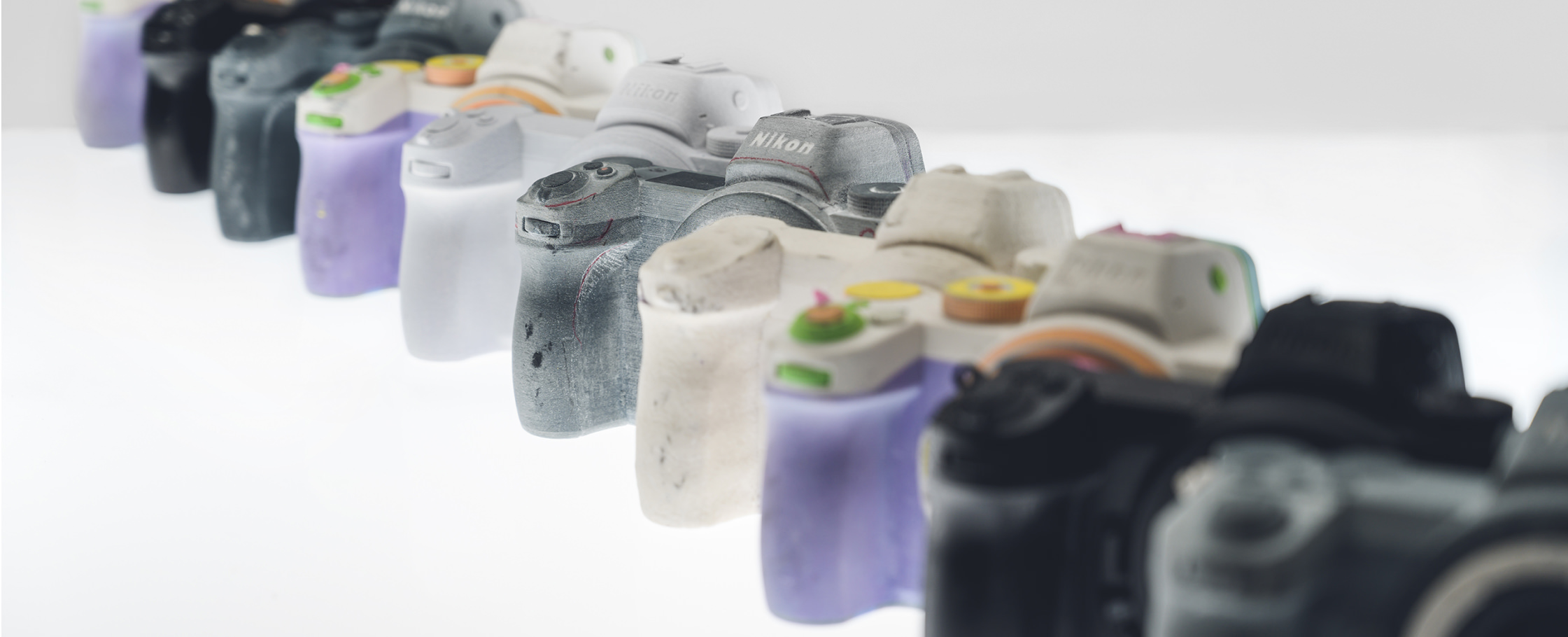
コンポーネント番号: 12
コンポーネント番号: 2
Compact body and superior operability achieved by fine-tuning down to 0.1 mm
コンポーネント番号: 3
Designing the compact mirrorless body while ensuring the reliability and operability that helps make
a camera that feels like a Nikon — all finished to the highest level — was a major challenge.
Operability
is affected by how accessible each button is when holding a camera. We evaluated the position and
size of each button, drawing on our knowledge of ergonomics from digital SLR cameras, to ensure the
fingers could reach them naturally. The human hand can clearly recognize even the slightest
difference, so each button has been fine-tuned down to 0.1 mm.
In particular, the buttons on
the rear of the camera have been minutely adjusted for size, projection amount, angle and
operational feel, to prevent users from making mistakes when operating them while looking through
the EVF. By making the top of the grip higher than the rest of the body, there is even room for the
little finger, while the AF-ON button on the rear is tilted slightly so users don't accidentally
touch other buttons when pressing it. All of these adjustments have been carefully considered down
to the 0.1 mm level.
コンポーネント番号: 6
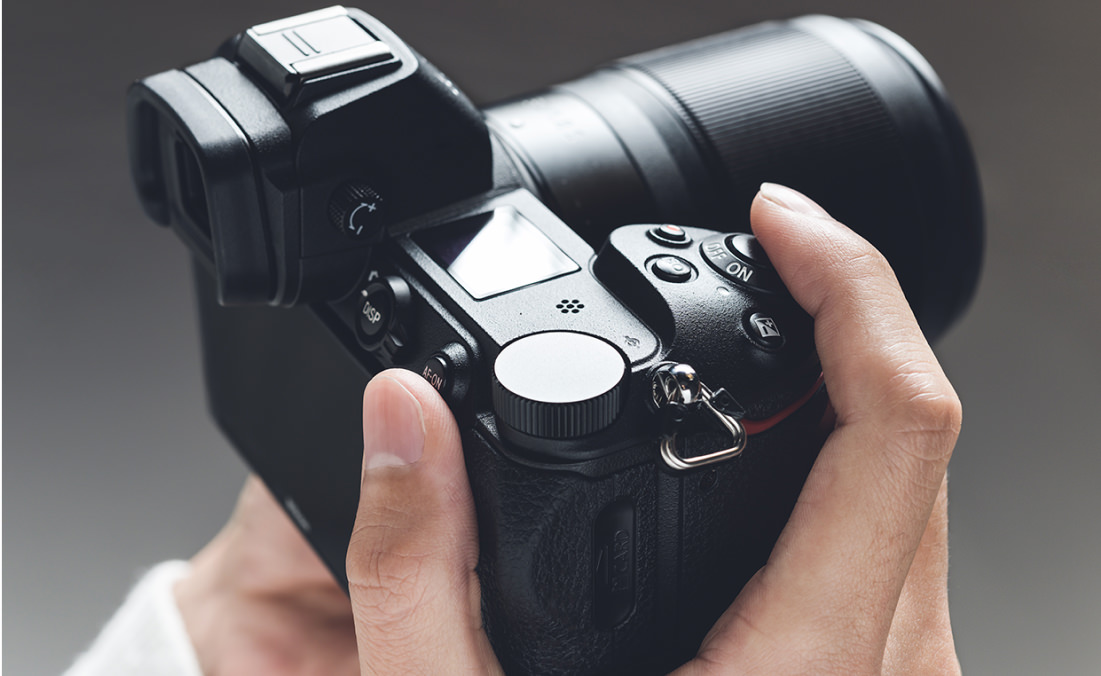
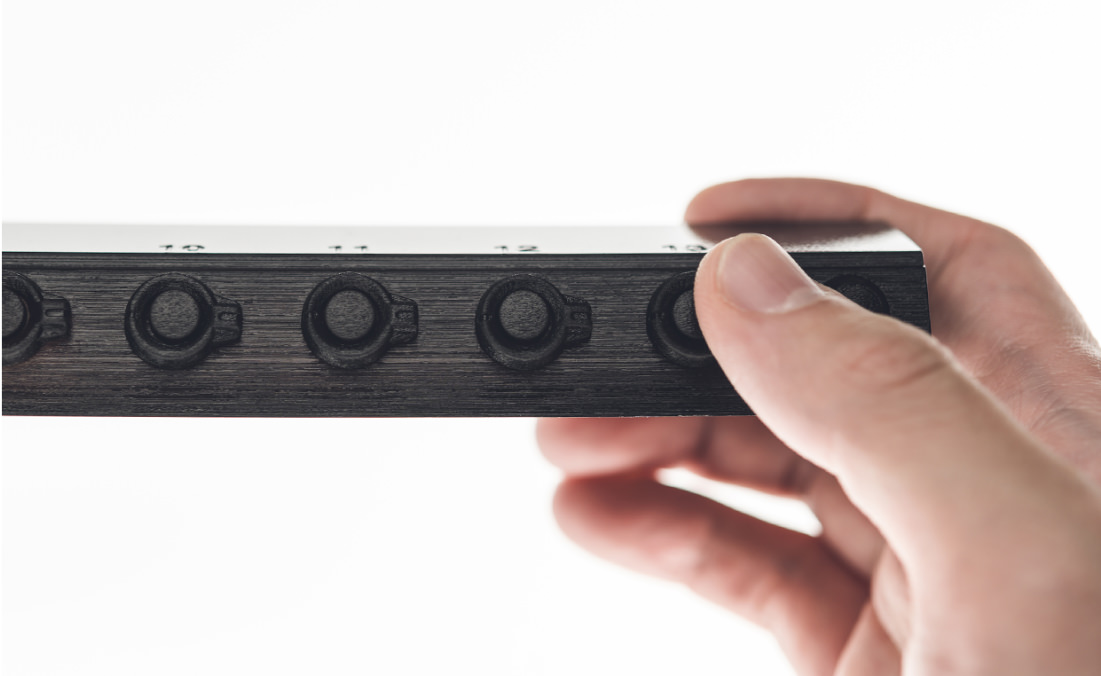
コンポーネント番号: 5
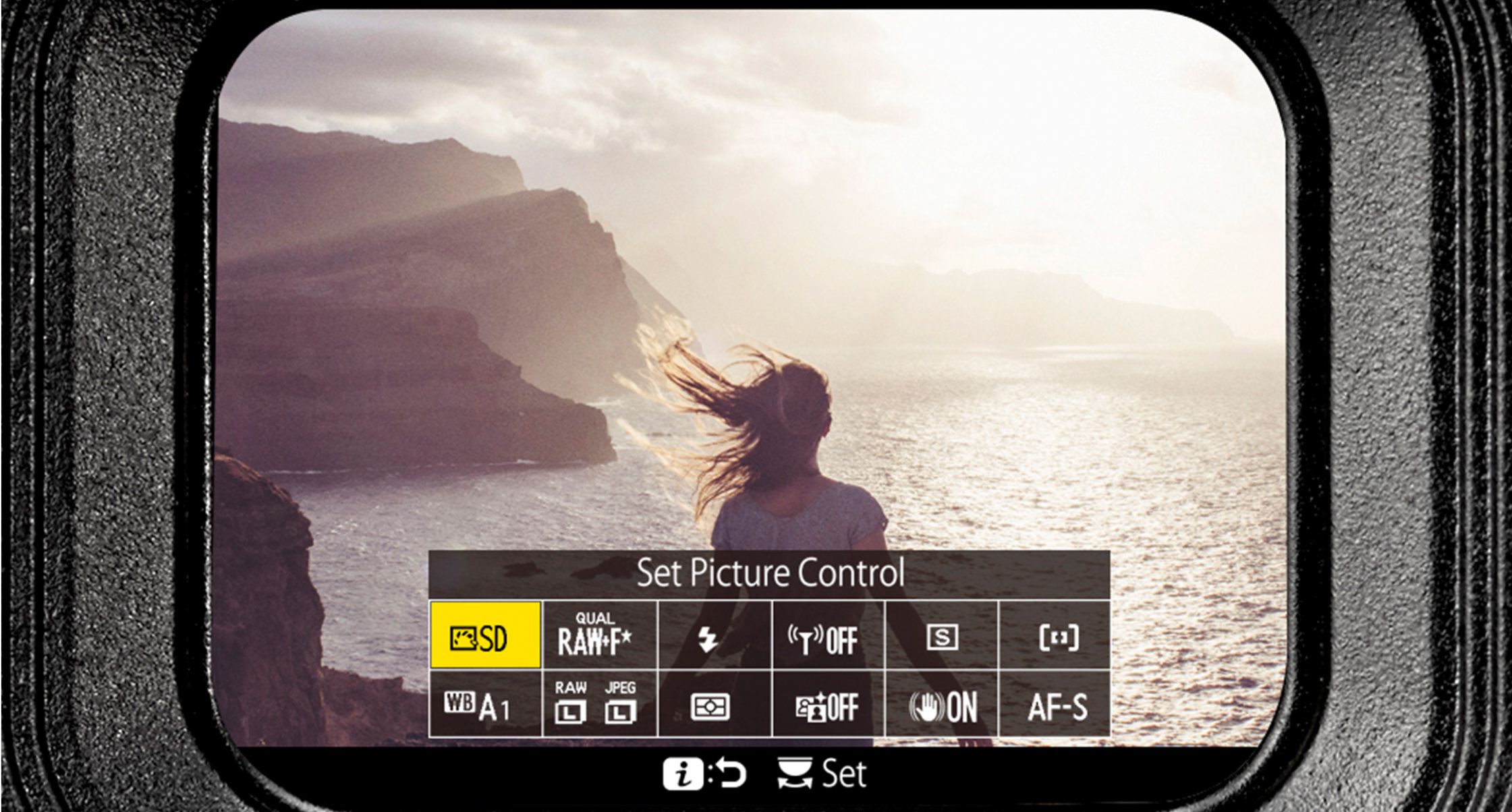
コンポーネント番号: 12
コンポーネント番号: 2
Comfortable operation for mirrorless cameras
コンポーネント番号: 3
Due to the smaller surface area of the camera's compact body, there are fewer operational
components. However, we have dramatically revised the GUI of the Z 7/Z 6 to ensure an easy
transition for users coming from digital SLR cameras.
During the design process, we considered
the operations not only of cameras, but also widely used devices such as smartphones.
コンポーネント番号: 5
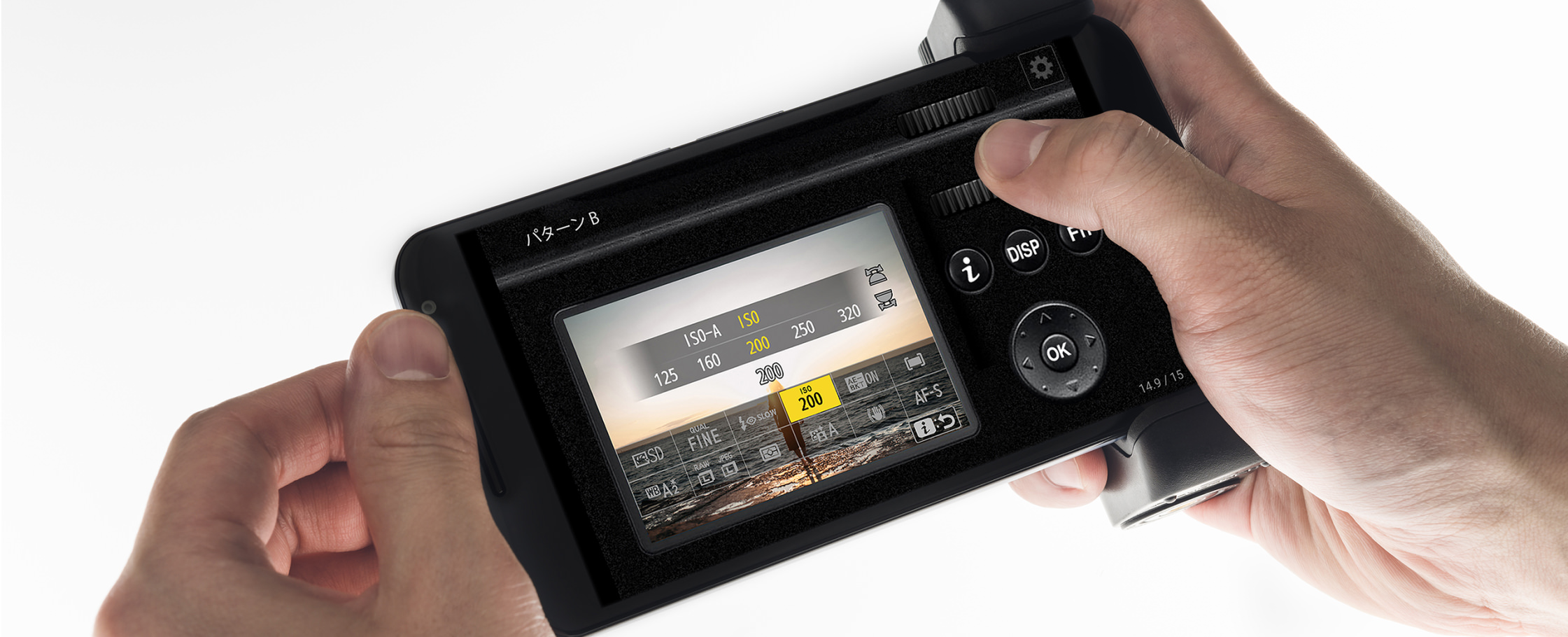
コンポーネント番号: 3
The i button, which allows access to various functions, is located in a position that the thumb can
reach naturally when holding the grip. All 12 items displayed in the 6×2 layout can be customized,
allowing anyone to enjoy superior operability according to their needs. The GUI design in the EVF
has been changed from that of the rear monitor to avoid eyestrain. Specifically, we positioned the
icons and settings information in the lower part of the frame, where users can look at them
naturally without getting distracted, for comfortable operation when using the EVF. In this way, the
camera inherits the user-oriented, feels-like-a-Nikon operability of digital SLR cameras.
Delivering
a natural view through the EVF is one factor that contributes to making the camera feel like a
Nikon. To take full advantage of this feature, we have adjusted the details and contours of each
element within the frame, such as settings and icons, so users can confirm them as clearly as
possible.
コンポーネント番号: 12
コンポーネント番号: 2
Lens and body designed with a sense of unity
コンポーネント番号: 3
The Z 7/Z 6 herald the start of a brand new era. That is why they employ new design approaches. Achieving a sense of unity between the lens and body is one of them. The Z 7/Z 6 have been developed to exploit the full potential of the system. To embody this philosophy in the design, the mount uses a metallic ring with the same anodized aluminum* texture as the lens root. When a lens is attached to the body, they look like a continuation of each other, giving an impression that the lens is an extension of the mount.
コンポーネント番号: 13
*Aluminum with anodic oxide coating.
コンポーネント番号: 5

コンポーネント番号: 12
コンポーネント番号: 2
The starting point for further evolution
コンポーネント番号: 3
The design of the Z 7/Z 6 is a first step in this new era for Nikon cameras. However, the process of evolution is still ongoing. The pace of technological evolution is rapid, and that's also true of design. We will seriously consider feedback from our users, and keep striving to respond effectively to their various requirements.
コンポーネント番号: 5
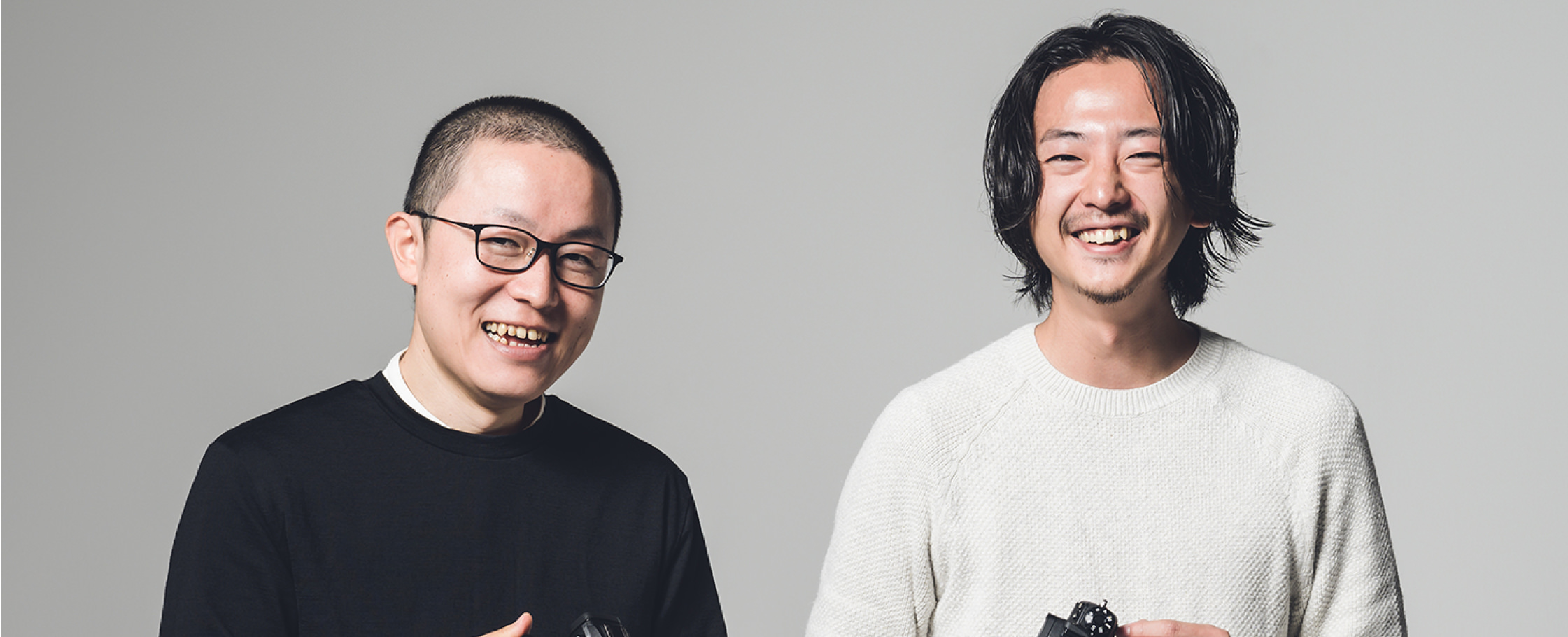
コンポーネント番号: 13
*Position and job description are as of the time of the interview, but have been partially revised.
コンポーネント番号: 12

